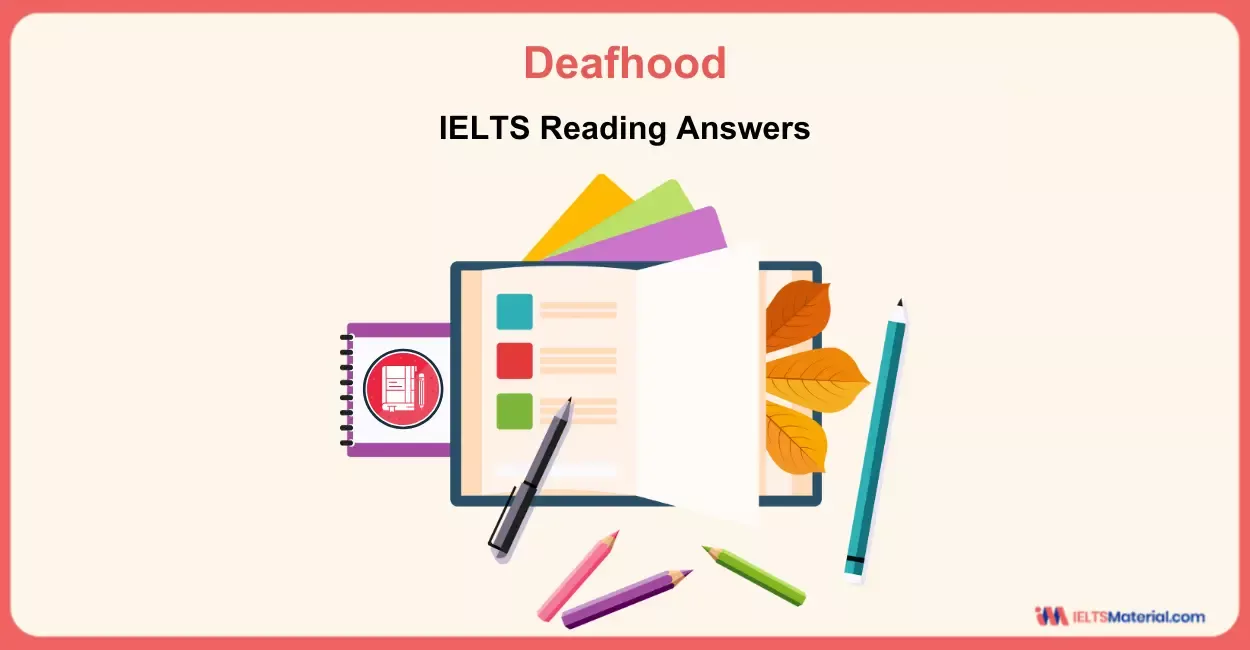Air Conditioning - IELTS Reading Answers
7 min read
Updated On
-
Copy link
Overwhelmed with large IELTS Reading passages? Assess your IELTS reading abilities by using the ‘Air Conditioning’ IELTS reading passage and its answer key to improve your reading strategy, especially if you are aiming for a band 8+ score in this module.
Table of Contents

Limited-Time Offer : Access a FREE 10-Day IELTS Study Plan!
If you are preparing for the IELTS General Training Reading test, understanding the format is the first step toward success. The test includes three sections with simpler passages, like Air Conditioning IELTS Reading Answers, based on everyday topics taken from newspapers, advertisements, notices, and instruction manuals. Practising regularly with similar IELTS General Reading practice tests help you get comfortable with the structure, time limits, and types of questions you'll face on exam day.
In this blog, you will solve the Air Conditioning - IELTS Reading Answers passage, provide explanations and locations for the answers, and get tips to help you handle the IELTS reading question type with examples.
Question Type for the Air Conditioning IELTS Reading Answers
The IELTS General Reading passage, Air Conditioning Reading Answers, come with 5 questions. The type of question type found in this passage is:
Passage for Air Conditioning IELTS Reading Answers
Given below is the Air Conditioning IELTS Reading passage. You can read it to learn how to answer the questions correctly and achieve a high IELTS band score.
Air Conditioning
The history of an invention that makes life more pleasant
Willis Carrier designed the first air-conditioning unit in 1902, just a year after graduating from Cornell University with a Master’s in Engineering.
At a Brooklyn printing plant, fluctuations in heat and moisture were causing the size of the printing paper to keep changing slightly, making it hard to align different colours. Carrier’s invention made it possible to control temperature and humidity levels and so align the colours. The invention also allowed industries such as film, processed food, textiles and pharmaceuticals to improve the quality of their products.
In 1914, the first air-conditioning device was installed in a private house. However, its size, similar to that of an early computer, meant it took up too much space to come into widespread use, and later models, such as the Weathermaker, which Carrier brought out in the 1920s, cost too much for most people. Cooling for human comfort, rather than industrial need, really took off when three air conditioners were installed in the J.L. Hudson Department Store in Detroit, Michigan. People crowded into the shop to experience the new invention. The fashion spread from department stores to cinemas, whose income rose steeply as a result of the comfort they provided.
To start with, money-conscious employers regarded air conditioning as a luxury. They considered that if they were paying people to work, they should not be paying for them to be comfortable as well. So in the 1940s and ’50s, the industry started putting out a different message about its product: according to their research, installing air conditioning increased productivity amongst employees. They found that typists increased their output by 24% when transferred from a regular office to a cooled one. Another study into office working conditions, which was carried out in the late ’50s, showed that the majority of companies cited air conditioning as the single most important contributor to efficiency in offices.
However, air conditioning has its critics. Jed Brown, an environmentalist, complains that air conditioning is a factor in global warming. Unfortunately, he adds, because air conditioning leads to higher temperatures, people have to use it even more. However, he admits that it provides a healthier environment for many people in the heat of summer.
Questions 1-5
1 When Willis Carrier invented air conditioning, his aim was to
A make workers feel cooler.
B produce more attractive paper.
C set up a new business.
D solve problems in a factory.
2 Home air conditioners were not popular at first because they were
A too big and expensive.
B not considered necessary.
C too inefficient.
D complicated to use.
3 Employers refused to put air conditioning in workplaces at first because they
A could not afford to pay for it.
B thought it was more suitable for cinemas.
C did not want to spend money improving working conditions.
D thought people would not work so hard in comfortable conditions.
4 What was the purpose of the research done in the 1940s and ’50s?
A to make office workers produce more
B to compare different types of air conditioner
C to persuade businesses to buy air conditioners
D to encourage employees to change offices
5 What does Jed Brown say about air conditioning?
A In future, everyone will need it.
B Turning it off will not reduce global warming.
C It can seriously damage people’s health.
D It is good for people, but bad for the environment.
Answers for Air Conditioning - IELTS Reading Answers with Location and Explanations
To discover the reasoning behind your responses, please meticulously compare them with the accompanying explanations and contextual references within the provided passage, ‘Air Conditioning’. It will help you to develop confidence while practicing other IELTS Reading topics for General and Academic.
1 Answer: D
Question type: Multiple Choice Question
Answer location: Paragraph 2, line 1 – line 2
Answer explanation: In the mentioned lines, it is given “At a Brooklyn printing plant, fluctuations in heat and moisture were causing the size of the printing paper to keep changing slightly, making it hard to align different colours. Carrier’s invention made it possible to control temperature and humidity levels and so align the colours.”. In the light of the fact that Carrier’s aim of inventing air conditioning was to solve the fluctuations of heat and moisture in a printing plant, the answer is D.
2 Answer: A
Question type: Multiple Choice Question
Answer location: Paragraph 3, line 1 – line 2
Answer explanation: The following lines – In 1914, the first air-conditioning device was installed in a private house. However, its size, similar to that of an early computer, meant it took up too much space to come into widespread use, and later models, such as the Weathermaker, which Carrier brought out in the 1920s, cost too much for most people.– establishes the fact that home air conditioners were unpopular in the beginning due to their size and cost (cost too much for most people). Hence, the answer is A.
3 Answer: C
Question type: Multiple Choice Question
Answer location: Paragraph 4, line 1 – ine 2
Answer explanation: In the fourth paragraph, it is stated that “To start with, money-conscious employers regarded air conditioning as a luxury. They considered that if they were paying people to work, they should not be paying for them to be comfortable as well.”. It can be pointed out that employers refused to put air conditioning in the workplace because they thought it to be a luxury which is unnecessary in a workplace. Hence, the answer is C.
4 Answer: C
Question type: Multiple Choice Question
Answer location: Paragraph 4, line 3
Answer explanation: In the mentioned paragraph of the passage, it is noted that, “So in the 1940s and ’50s, the industry started putting out a different message about its product: according to their research, installing air conditioning increased productivity amongst employees.”. Based on this reference, it can be concluded that the main purpose of the research was to persuade the employers to buy air conditioners by citing the factor that they increase productivity. Hence, the answer is C.
5 Answer: D
Question type: Multiple Choice Question
Answer location: Paragraph 4, line 2
Answer explanation: In Paragraph 4, it is said that “Jed Brown, an environmentalist, complains that air conditioning is a factor in global warming.”. This points out that Jed Brown was of the opinion that air conditioning was good for people in the summer heat, but it was harming the environment as it contributed to global warming. Hence, the answer is D.
Want to practice with exclusive IELTS General Reading materials and experts?
Tips to Solve the Question Types in Air Conditioning IELTS Reading Answers
Since now you know the answers to the Air Conditioning Reading Answers with explanation, let us check out some quick IELTS General Training Reading tips to answer the question type.
Multiple-Choice Questions:
You will be given a reading passage followed by several questions based on the information in the paragraph in multiple-choice questions. Your task is to understand the question and compare it to the paragraph in order to select the best solution from the available possibilities.
- Before reading the passage, read the question and select the keywords using the IELTS Reading keyword techniques. Check the keyword possibilities if the question statement is short on information.
- Then, using the keywords, read the passage to find the relevant information.
- To select the correct option, carefully read the relevant words and match them with each option.
- You will find several options with keywords that do not correspond to the information.
- Try opting for the elimination method mostly.
- Find the best option by matching the meaning rather than just the keywords.
Finally, it is essential to master all IELTS Reading question types as doing so will directly improve your reading accuracy, increase your reading speed, and ultimately lead to a higher overall band score. The ability to identify keywords, recognize paraphrased expressions, and select relevant details from the text are key skills that, once mastered, will provide you with strong strategies for effectively completing both factual and summary based tasks. So, regular practice tests and targeted preparation will help you build confidence for your IELTS exam day preparation.
Useful Links:
- Workplace Health and Safety & How to Manage Flexible Working - IELTS Reading Answers
- Safety When Working On Roofs & Maternity Allowance For Working Women – IELTS Reading Answers
- Tree Cutters at Work & Plumbing Skills - IELTS Reading Answers
- Mechanical Lifting Equipment & Dealing with Customer Complaints – IELTS Reading Answers
- Growing Forced Rhubarb Reading Answers for IELTS General
- IELTS Reading Recent Actual Tests 2025
- Useful IELTS Reading Articles, Website Resources and Material for Academic and General Training
Practice IELTS Reading based on question types

Start Preparing for IELTS: Get Your 10-Day Study Plan Today!
Explore other Reading Practice Tests

Nehasri Ravishenbagam

Nehasri Ravishenbagam

Kasturika Samanta

Kasturika Samanta
Recent Articles

Nehasri Ravishenbagam

Haniya Yashfeen

Haniya Yashfeen

Haniya Yashfeen




Post your Comments